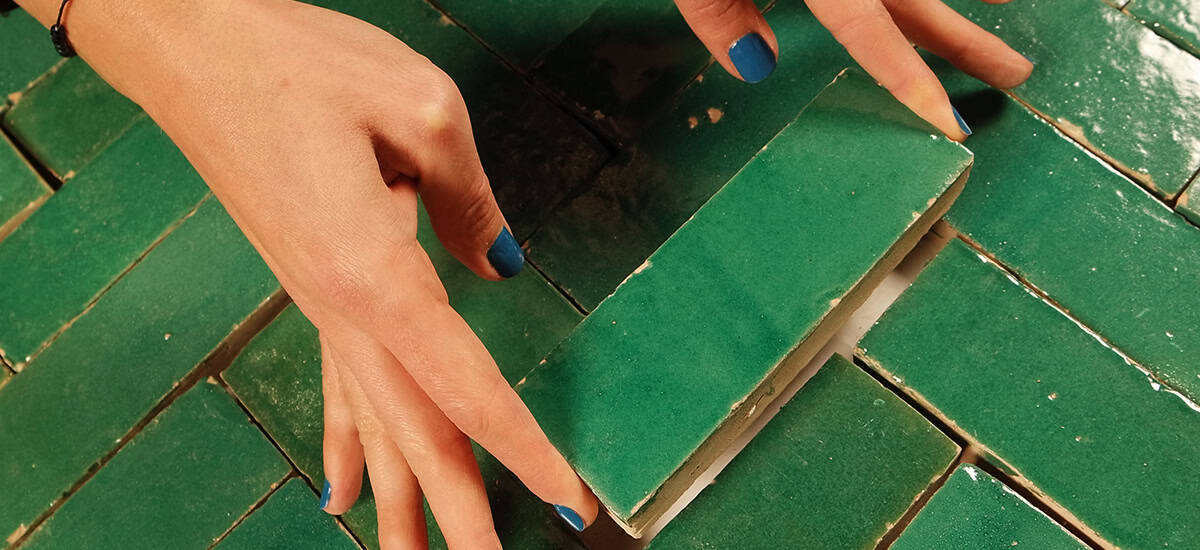- No Products In The Cart
- start shopping
Moroccan Zellige and Bejmat tiles installation tips

As zellige and bejmat tiles are individually handmade, no two are exactly alike. While this is part of what makes these unique tiles so appealing, it also makes them quite difficult to lay. We would recommend that you seek a professional tile installer with experience in laying zellige tiles to ensure the best result. However, here are a few guidelines to help you if you decide to lay them yourself or for someone who has not worked with these kinds of tiles before.
Tips for laying zellige and bejmat tiles
Lay the edge of the tiles to the edge
Zellige and bejmat tiles should be laid as closely together as possible. The maximum gap between them should not be more than 1mm. As these hand-made tiles are not precisely formed there will always be small irregular gaps between them which must later be filled with grout.Use tiles from different batches
Due to the colour variations intrinsic to the beauty of zellige tiles you should lay tiles taken randomly from different boxes or batches. This will ensure that the overall effect will be more homogenous with not all tiles of a similar hue being located next to each other.Apply a double spread of adhesive
You should use a flexible white paste adhesive or a flexible high-bond mortar. Using two layers of adhesive will give you more ability to adjust the positioning of the zellige tiles. The adhesive or mortar should be about 3mm thick. This allows you to achieve a pleasing surface with no sharp edges coming out. You can apply the adhesive both to the wall and to the tile.Use a flexible liquid grout
As the spaces between the tiles to be filled with grout are very small, you should use a very liquid and runny grout. You should spread the grout diagonally across the tiles and allow it to set for 20-30 minutes before gently cleaning the excess grout from the tile surface.
Underfloor heating
Unglazed zellige and bejmat tiles
Natural or unglazed zelliges and bejmats are very porous. You should remove any excess grout quickly to avoid staining. Unglazed zelliges need sealing before and after laying.
Embrace their differences
The unique individuality of each tile is what makes zellige tiles so special. They can vary in thickness as much as 1.5mm. While no tile has the monotonous perfection of mass-produced tiles, each one does pass a high standard of quality control. That means that you can lay them without worries, knowing that the minor differences are what contribute to the final overall effect.
Where to use zellige and bejmat tiles?
Zellige tiles are ideal for walls. For floors that are not heavily transited, floor zellige, known as bejmats are a better choice. These are thicker and more resistant so they can better withstand people walking on them. However, bejmats have a thinner layer of glaze on them and are more susceptible to wear.

